|
Send This E-newsletter
To Everyone You Know
60 Days
The End of My Test
Gardening Journey
My First Gardening Journey:
How I Built A Raised
Bed Garden
Sep. 28, 2017
After 90 days I am ending my FIRST
raised bed
gardening journey to start my new or
SECOND
raised
bed gardening journey for my winter crops.
I was initially warned from my gardening class instructor that since I chose to grow foods in June 2017, which was a very hot month in my region, Austin, TX, I would be lucky if anything came up at all, but I was so excited about the raised bed gardening project, that I could not wait until cool weather crop season in September/October, or to grow spring crops in
March/April, to start this gardening journey.
However, overall we still got some great results and was able to walk everyone through the entire raised bed gardening process.
I can't tell you what it has been like to be able to look out of the kitchen window of my own home and look at something we started from scratch - our own
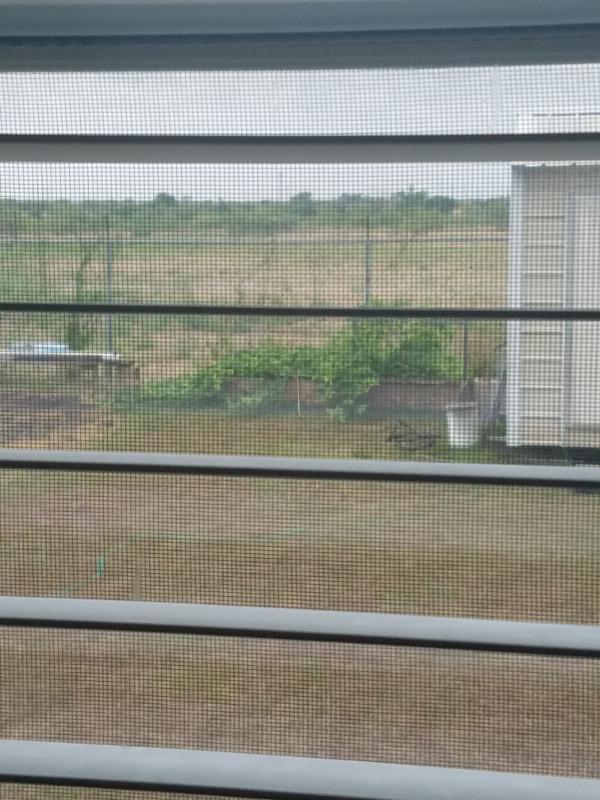 backyard, raised bed garden. backyard, raised bed garden.
We can't bring this gardening project to an end without telling you first how successful it was. Remember, never let anyone define success for you, whether you are looking at your personal or business life. Success is in the eye of the beholder. Success is simply moving forward and accomplishing whatever it was you set out to accomplish...and that we did.
Again, I was raised on a farm and everything my 8  siblings, my mother and father and I ate came from the land.
We knew no other way of living, so despite many people siblings, my mother and father and I ate came from the land.
We knew no other way of living, so despite many people
today making all kinds of excuses for not growing foods, I know
first-hand
we can get back to nature - to our roots - and start eating delicious, home-grown foods again.
First of all I am not going to tell you my journey was easy. It was hard work wiith many challenges, which taught us what to look out for in the future. Sure there were mistakes made by me and my mate, but we have owned up to them and will be using these mistakes as a guideline as we build even more raised bed gardens in the future.
Here Comes The Rats:
We initially planted
watermelons, cataloupes, honeydew melons, New Zealand Spinach, Swiss Chard, cucumbers, peppers
and because I wanted more green foods, we doubled up, which means we planted extra rows of the Swiss chard, cucumbers and peppers.
Besides a couple of caterpillars on a tomatoe plant that didn't survive, even though we picked the worms off, we really did not have a pest issue with our garden, until after about 60 days when Hurricane Harvey decided to hit  Houston, TX and brought 4 days of rain to my city, Austin, TX. Houston, TX and brought 4 days of rain to my city, Austin, TX.
For those of you who will be growing foods in the future, during rains, especially floods, this is when snakes and rats are forced from their nests and beds in search of food, so this is exactly what happened to us.
Actually I was out of town for 10 days on speaking gigs, when this happened. Wh
en I told my mate that I was on my way back for a couple of days, he did not volunteer to tell me until then that rats had gotten into our raised bed garden.
If I had been at home, I would have been checking everyday on the garden - rain or shine - but I think because of the rain, my mate did not inspect the garden like I would have.
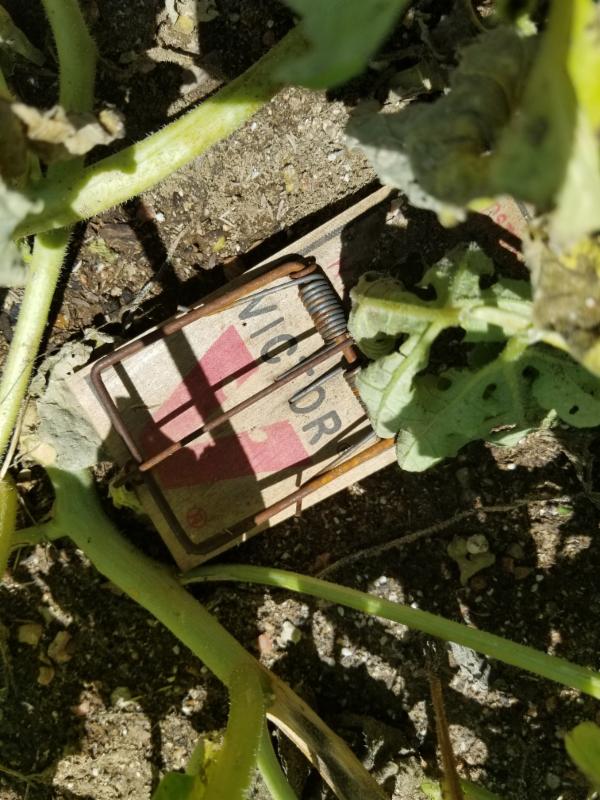 However, he tried to make amends and put down rat poison in boxes and he said the boxes are clean, which means the rats ate the poison so I am hoping that's the end of our rat problem. However, he tried to make amends and put down rat poison in boxes and he said the boxes are clean, which means the rats ate the poison so I am hoping that's the end of our rat problem.
The rats were big rats about 5 inches in length so they weren't the kind of rats that gets into homes, these were field rats.
My mate even put down rat traps in the garden.
As you can see on the pictures, we stay next to a field, which was plowed up with a big tractor, a few weeks ago for the first time in 3 years.
For days, buzzards were busy probably eating the rabbits
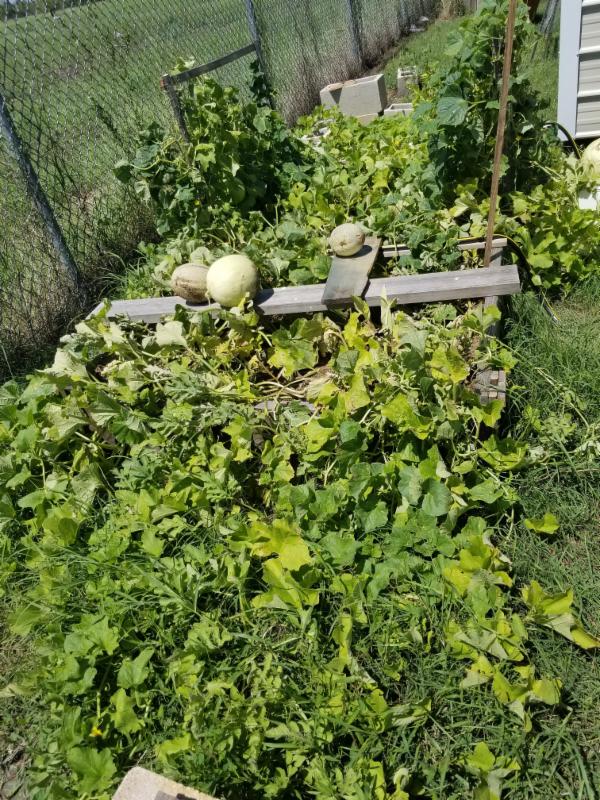 and other animals that did not get out of the way in time. So until now we did not have a rat problem, but it is good that we had time to plant the garden and harvest many of the foods, before the rats came out. and other animals that did not get out of the way in time. So until now we did not have a rat problem, but it is good that we had time to plant the garden and harvest many of the foods, before the rats came out.
My mate feels since we allowed the watermelon, cantaloupes and honeydew melon vines to lay on the ground, versus putting them up on a trellis-like device, it served as a ladder for the rats to come into the garden.
So he made "make-shift" gadgets (put foods on planks, boards, and buckets) to lift the foods off the ground so the rats could not get to them, but you know as well as I do that rats are famous for climbing and squeezing into tight places.
Other Mistakes Included:
- Double-check Your Seed Packet Labels: I think I planted one of the crops with seeds that wasn't
 organic, but the class instructor who worked in the organic gardening center, where I bought the seeds, said all their seeds comes from reputable companies, so I felt better about this, but next time I need to see the word "organic" on the label. What I also found out is when seeds are not "organically certified," does not mean the seeds are not made of good quality. The company just might not have had the funds to take this process, so the company themselves, is reputable. This is good to know when buying seeds in the future, especially when you are buying the seeds from a REPUTABLE gardening center (not Home Depot or Lowe's). Many of the heirloom seeds that were passed down from generation to generation and is the best to buy for flavor, do not always have the word "organic" on them. Here is another explanation on the difference in "organic" and "heirloom" seeds. organic, but the class instructor who worked in the organic gardening center, where I bought the seeds, said all their seeds comes from reputable companies, so I felt better about this, but next time I need to see the word "organic" on the label. What I also found out is when seeds are not "organically certified," does not mean the seeds are not made of good quality. The company just might not have had the funds to take this process, so the company themselves, is reputable. This is good to know when buying seeds in the future, especially when you are buying the seeds from a REPUTABLE gardening center (not Home Depot or Lowe's). Many of the heirloom seeds that were passed down from generation to generation and is the best to buy for flavor, do not always have the word "organic" on them. Here is another explanation on the difference in "organic" and "heirloom" seeds.
- Conduct More Research on Seed Spacing: You can see the Swiss Chard in the below picture that I almost planted too close together. Despite what the seed packets show on
 the label, some of these seeds need to be spread out more than 4 or 6 inches when planted. If you plant the foods too close together, it will stunt their growth. So conduct your research ahead of time before planting. Go on google.com and especially on YouTube.com and look at pictures and videos of how most farmers space their seeds out. the label, some of these seeds need to be spread out more than 4 or 6 inches when planted. If you plant the foods too close together, it will stunt their growth. So conduct your research ahead of time before planting. Go on google.com and especially on YouTube.com and look at pictures and videos of how most farmers space their seeds out.
- Be Careful Planting Fruits and Green Foods in Same Raised Bed Garden: We made another mistake by planting
  watermelons, cantaloupes and honeydew melons in the same raised bed as our green foods. After going on a one (1) week vacation, we came back to an out of control garden after the vines just took over the garden. Had we been at home to guide the vines in a particular direction, then we would have had more control over the garden. watermelons, cantaloupes and honeydew melons in the same raised bed as our green foods. After going on a one (1) week vacation, we came back to an out of control garden after the vines just took over the garden. Had we been at home to guide the vines in a particular direction, then we would have had more control over the garden.
- Use the Right Type of Soil: In my mate smaller garden, he did not use the same Thunder Dirt from GEO Growers, as I did in the raised bed garden so I think this resulted in his cantaloupes taking 90 days to start growing, and it's a good chance they won't yield a harvest. Plus the
 seeds were from foods bought at a grocery store so we were just testing these seeds. My cantalopes grew from organic seeds and tasted great. So this goes to show you, you can have seeds that are no good, especially if they are not organic. The bottomline is it is not a good idea to try to save seeds from foods you buy in regular grocery stores, that are probably GMO seeds. seeds were from foods bought at a grocery store so we were just testing these seeds. My cantalopes grew from organic seeds and tasted great. So this goes to show you, you can have seeds that are no good, especially if they are not organic. The bottomline is it is not a good idea to try to save seeds from foods you buy in regular grocery stores, that are probably GMO seeds.
-
Use Fertilizer Every Two (2) Weeks: My mate  refused to use the recommended fertilizers every two weeks on inside and outside plants as suggested by my refused to use the recommended fertilizers every two weeks on inside and outside plants as suggested by my  class instructor, even though we used the good soil. He felt because the foods were growing well, we did not need the fertilizer and we were actually wasting money, but they would have grown even better, if we used the organic fertilizer every two weeks as recommended. The Happy Frog tomatoe and vegetable fertilizer can be used on veggies, tomatoe varieties, soft fruits and berries. It contains calcium which helps prevent blossom end rot and builds stronger cell walls, making plants more disease resistant. All the fertilizers feeds the soil and plant giving the plants a greater chance of survival, so it's important to use fertilizer, no matter what type of soil you use. class instructor, even though we used the good soil. He felt because the foods were growing well, we did not need the fertilizer and we were actually wasting money, but they would have grown even better, if we used the organic fertilizer every two weeks as recommended. The Happy Frog tomatoe and vegetable fertilizer can be used on veggies, tomatoe varieties, soft fruits and berries. It contains calcium which helps prevent blossom end rot and builds stronger cell walls, making plants more disease resistant. All the fertilizers feeds the soil and plant giving the plants a greater chance of survival, so it's important to use fertilizer, no matter what type of soil you use.
- Use A Shade Cloth: You should wait to plant the foods in a cooler climate, if that is what is called for, or use a shade cloth, if it is still hot outside. The peppers and spinach never grew because spinach (and tomatoes) will not grow in over 80 degree weather. I learned that after
 planting the spinach. The pepper seeds were by Burpee and several people on YouTube.com said they had an issue with seeds from Burpee so I will avoid their seeds in the future. Also my mate refused to put a shade cloth on any of his 3 tomatoe plants (2 in raised bed and 1 in a pot), which can't grow in over 80% weather. During that time we had over 2 months of 100 degree weather in Austin, TX in 2017. So out of 3 types of tomatoes, only the cherry tomatoes, which are known to be able to withstand the heat - grew. planting the spinach. The pepper seeds were by Burpee and several people on YouTube.com said they had an issue with seeds from Burpee so I will avoid their seeds in the future. Also my mate refused to put a shade cloth on any of his 3 tomatoe plants (2 in raised bed and 1 in a pot), which can't grow in over 80% weather. During that time we had over 2 months of 100 degree weather in Austin, TX in 2017. So out of 3 types of tomatoes, only the cherry tomatoes, which are known to be able to withstand the heat - grew.
-
Be Careful When Repotting:
I believe when I repotted the tangerine tree to a pot with a hole in it, to an unglazed clay pot, which was recommended, I destroyed some of the roots and that's why the tree died.
-
Have All Materials Ready When You Plant:
Have everything ready when you start planting, so you don't lose any of your crops. My mate planted a tomatoe plant in a large pot and

some of the
cherry tomatoes survived, but we did not put out the
bird scare tape
or surround the plant with fencing soon enough because birds were able to eat some of the tomatoes. At the end of the season, we were left with a
 small batch, instead of what we had hoped for. After using the bird scare tape and placing fencing around the tomatoes, we were able to keep the birds out. N
ext year we will try another tactic to grow more tomatoes.
- Don't Harvest The Food Too Early: Harvesting food too early could be a real problem for first time gardeners. So many gardeners get impatient and many times, they are ready to plant more crops for another season so they will rush the process. But when you plant foods, you can't rush the process. Leave the foods alone until the frost comes in. We believe we picked or harvested
 some of the food too early, which resulted in the foods not being ripe. Just because the foods, especially the honeydew melons, were big for their size, did not mean it was ready some of the food too early, which resulted in the foods not being ripe. Just because the foods, especially the honeydew melons, were big for their size, did not mean it was ready  to be harvested. You have to conduct your research by looking at foods in grocery stores, going on google.com and YouTube.com and looking at pictures and videos, to know when foods are ripe and ready to be harvested. You can also tell by the smell. Also because none of the honeydew melons ripened, there could have been other issues there so we will try them again next year. It's not a food that I eat anyway, but my mate eat these. to be harvested. You have to conduct your research by looking at foods in grocery stores, going on google.com and YouTube.com and looking at pictures and videos, to know when foods are ripe and ready to be harvested. You can also tell by the smell. Also because none of the honeydew melons ripened, there could have been other issues there so we will try them again next year. It's not a food that I eat anyway, but my mate eat these.
What We Did Right:
- Get A Diagnosis on Plants: Don't be afraid to get a diagnosis on your plants. We go to the doctor for a check-up and we take our animals to animal doctors for check ups. I took a leaf from the lemon tree to the natural gardening center for a diagnosis and she said it was being overwatered. The lemon tree is doing well now.
  After my mate was going behind my back watering it, I just gave it to him to look after. It's been in the house most of the time and is growing quite well. Eventually though, it will need to be moved outside and repotted to a bigger pot or even planted in the ground. However, I am glad we don't have trees in our backyard, because at this point, the trees would be a hinderance with growing our foods because most of the foods, except for the cold weather crops, will need about 6 to 8 hours of sunlight everyday. After my mate was going behind my back watering it, I just gave it to him to look after. It's been in the house most of the time and is growing quite well. Eventually though, it will need to be moved outside and repotted to a bigger pot or even planted in the ground. However, I am glad we don't have trees in our backyard, because at this point, the trees would be a hinderance with growing our foods because most of the foods, except for the cold weather crops, will need about 6 to 8 hours of sunlight everyday.
- Use Good Soil: The fact that we chose to use the Thunder Dirt from
 GEO Growers in Austin, which contained many nutrients, gave the foods a fighting chance since we chose to start the garden in one of the hottest months of the year, June 2017. GEO Growers in Austin, which contained many nutrients, gave the foods a fighting chance since we chose to start the garden in one of the hottest months of the year, June 2017.
- Set Up A Water Drip or Irrigation System: The best step that we took was rigging a drip system using a sprinkler system (Orbit Hose Faucet
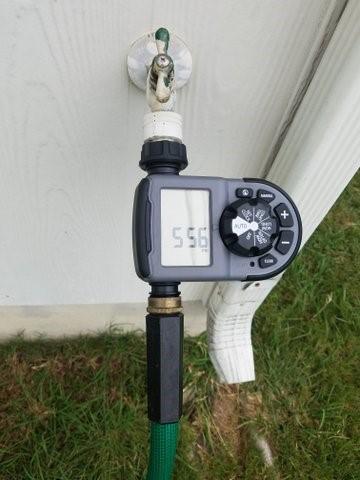 Timer from HomeDepot.com), when we went out of town for a week. But hopefully in the future with any raised bed garden, we will install a drip system as soon as we apply the soil. But the good thing is, no matter how much foods we plant, we will still be able to plan trips out of town. Timer from HomeDepot.com), when we went out of town for a week. But hopefully in the future with any raised bed garden, we will install a drip system as soon as we apply the soil. But the good thing is, no matter how much foods we plant, we will still be able to plan trips out of town.
Taste of Heaven
Even though the peppers and spinach never came up
along with some of the tomatoes, we had a
"taste of heaven" 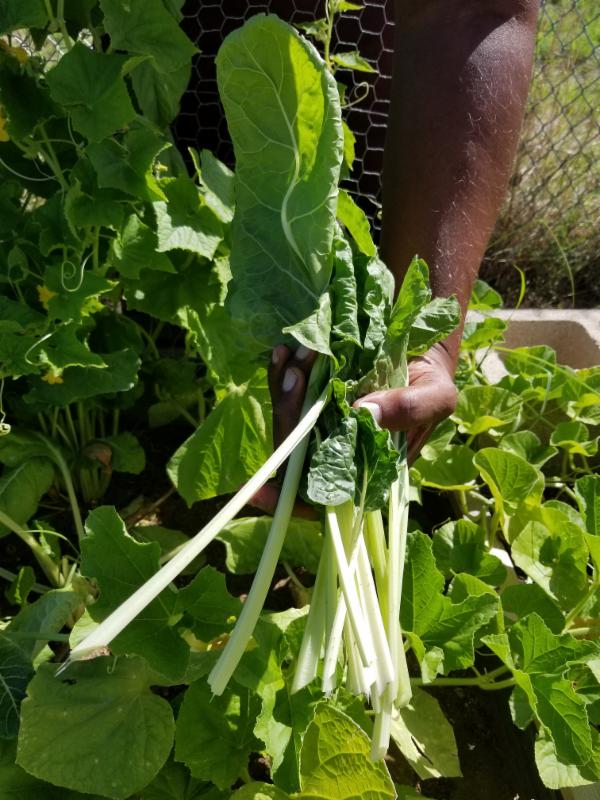 enjoying the other foods - the
watermelons
,
cantaloupes
,
cherry tomatoes, cucumbers, and Swiss chard
(
and watching the
lemon tree
enjoying the other foods - the
watermelons
,
cantaloupes
,
cherry tomatoes, cucumbers, and Swiss chard
(
and watching the
lemon tree
grow).
Also the Swiss chard is  continuing to come up along with the cucumbers until the frost sets in, even though we decided to clean the vines out of our garden.
When I juiced Swiss chard and cucumbers for the first time, it tasted like a taste of heaven.
Also when I continuing to come up along with the cucumbers until the frost sets in, even though we decided to clean the vines out of our garden.
When I juiced Swiss chard and cucumbers for the first time, it tasted like a taste of heaven.
Also when I 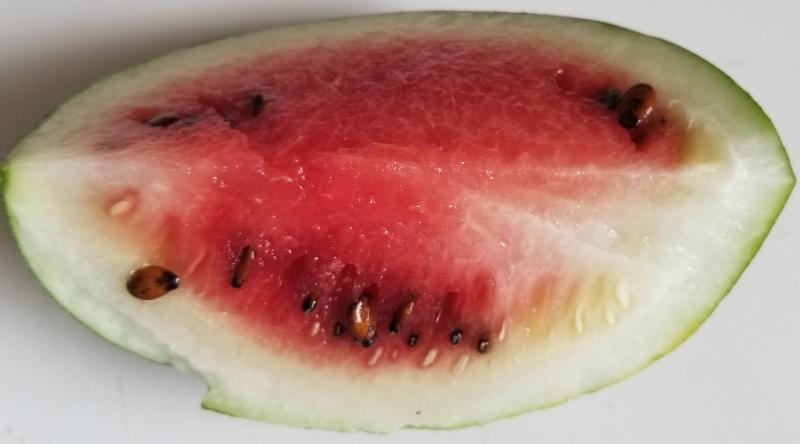 tasted the watermelons and cantaloupes, again it was like a taste of heaven and it tasted the watermelons and cantaloupes, again it was like a taste of heaven and it 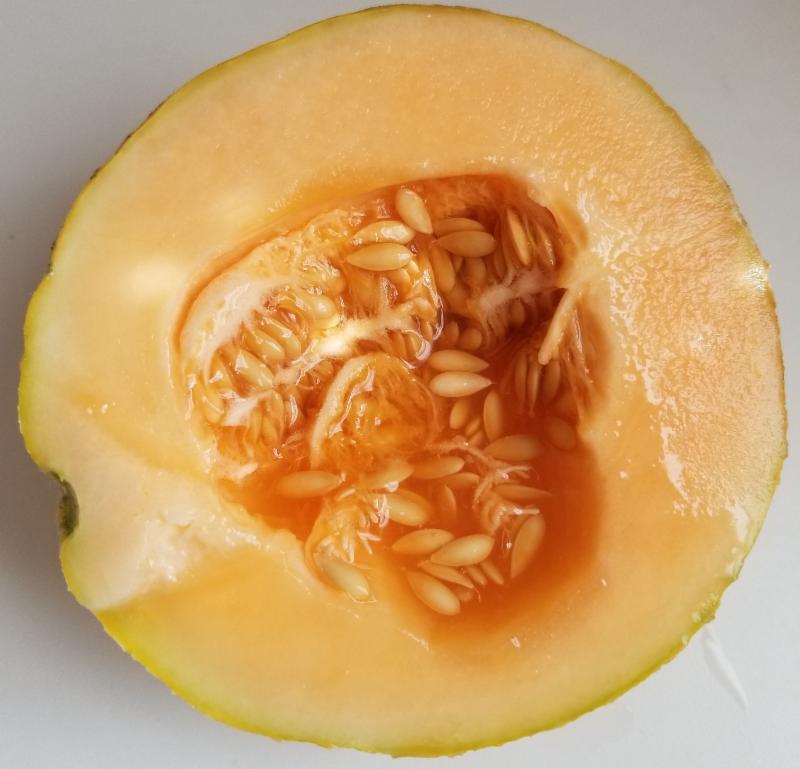 brought me back to my days growing up on our farm. brought me back to my days growing up on our farm.
For those of you who have never seriously stuck with a project in your life, you should really try what we just finished -- your own gardening journey.
It has now opened a door to a world of possibilities and opportunities, for instance, even better health,  more gardens in the future and even more foods to give to family, friends, neighbors or even sell at farmer's markets and other venues. more gardens in the future and even more foods to give to family, friends, neighbors or even sell at farmer's markets and other venues.
Next year we can't wait to plant some corn and potatoes. Corn, like tomatoes, is not on my blood type list, so I will only taste these foods, and my mate will eat them.
The green vegetable Swiss chard, doesn't block your iodine the same way that broccoli, cabbage and other green  cruciferous foods do, so next year I would like to plant more rows of Swiss chard, especially for juicing. cruciferous foods do, so next year I would like to plant more rows of Swiss chard, especially for juicing.
Also when we plant watermelons, cantaloupes and honeydew melons in the future, we plan on giving them their own raised bed garden away from any green foods so when their vines grows out, they won't block or lay on top of other foods.
Why First-Time Gardeners Give Up
Whether you are growing foods in the ground in  gardens, in raised bed gardens, farming using permaculture or aquaponics, or growing foods in pots and containers in or outside of your home, or using some other method of growing foods, only you can decide
which is
best for you. For us we plan on sticking with raised beds and growing foods in pots gardens, in raised bed gardens, farming using permaculture or aquaponics, or growing foods in pots and containers in or outside of your home, or using some other method of growing foods, only you can decide
which is
best for you. For us we plan on sticking with raised beds and growing foods in pots 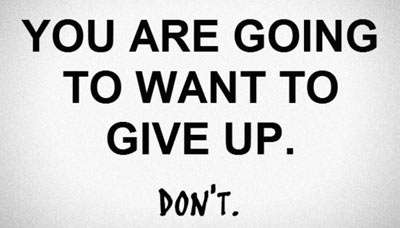 and containers. and containers.
What is quite alarming is that over 40% of people choose not to garden after the first year, probably because:
- No Harvest: In many cases it's because their crops did not yield any harvest so they gave up. They probably did not conduct enough research in the first
 place. Gardening is just like starting a business, you got to have a mentor, where you can ask questions so you can avoid some of the critical mistakes. place. Gardening is just like starting a business, you got to have a mentor, where you can ask questions so you can avoid some of the critical mistakes.
- Did Not Have Enough Space: Many backyards have too many trees, which provide shade, but if you grow foods in the ground or in raised bed
 gardens, you need 6 to 8 hours of sunlight, especially for summer crops. So everyone need to be strategic and then chose to grow foods at community gardens, or in pots or containers in or outside of your home. The goal is not to let the space issue, deter your dream of growing your own foods. Remember the story I told you about the lady that had over 100 pots and containers because she was renting. gardens, you need 6 to 8 hours of sunlight, especially for summer crops. So everyone need to be strategic and then chose to grow foods at community gardens, or in pots or containers in or outside of your home. The goal is not to let the space issue, deter your dream of growing your own foods. Remember the story I told you about the lady that had over 100 pots and containers because she was renting.
- Had To Travel: Many people might be gardeners, but might love to travel or have to leave for emergency trips and might not have others to
 care for their gardens. This is why it's important to have your own drip or irrigation system. And this is something you need to plan for from the very beginning of deciding to become gardeners. care for their gardens. This is why it's important to have your own drip or irrigation system. And this is something you need to plan for from the very beginning of deciding to become gardeners.
- Too Much Work: Many new gardeners found gardening to be hard work. I am sure many
 people got involved and had no idea how much work it would be, especially when they had to monitor and water the garden on a daily basis. people got involved and had no idea how much work it would be, especially when they had to monitor and water the garden on a daily basis.
- Waited Too Late: For many it was too late to try
 to use gardening to improve their health, so they had to stop because of their health. to use gardening to improve their health, so they had to stop because of their health.
Don't let any of the above reasons keep you from
 becoming a gardener or even starting your own
farm. I can't see myself giving up, not this early in the game, especially now that I know beyond a shadow of a doubt, that I now have a
"green thumb."
Green thumb gardeners are not always born with green thumbs. They develop these by attending gardening classes, joining gardening groups and conducting research, especially online on google.com and YouTube.com, the two largest search websites on the internet.
So what's going to be your excuse for not growing foods?
Remember again, most people grow foods because:
- Organic home-grown foods taste better.
- Organically home-grown foods have more nutrition so it will improve your health and keep down doctor's visits, by ensuring that you are not eating foods with chemicals.
- You can save money by growing your own foods.
- Growing home grown foods is better for the environment. It prevents soil erosion, protects water quality of ground water, saves energy, reduces pollution, filters out carbon dioxide, while supplying fresh oxygen.
How Will You Stay Motivated To Keep Growing Foods
Most of you saw
first-hand in my gardening journey, what I did to
stay motivated
and to become a successful gardener such as:
- Got Family Involved: If you truly want to get
 motivated and stay motivated while growing foods, get others around you involved. Many relationships slow down after a while, especially for Seniors, so you really need something to enjoy together like gardening. You can also do this with other family members, friends and neighbors by inviting them to visit your backyard gardens, farms, community gardens, and join food co-ops and food coalitions. motivated and stay motivated while growing foods, get others around you involved. Many relationships slow down after a while, especially for Seniors, so you really need something to enjoy together like gardening. You can also do this with other family members, friends and neighbors by inviting them to visit your backyard gardens, farms, community gardens, and join food co-ops and food coalitions.
- Attended Gardening Classes/Got Mentor: I not
 only attended regular, local natural gardening center, weekly or bi-monthly meetings and classes, the instructors there, both a man and woman, served as my mentor. I constantly asked them questions on the things I did not understand. only attended regular, local natural gardening center, weekly or bi-monthly meetings and classes, the instructors there, both a man and woman, served as my mentor. I constantly asked them questions on the things I did not understand.
- Started My Own Garden Club: I started my own garden club "Cathy Harris Garden Clubs" (www.CathyHarrisGardenClub.com) online. I started my own gardening club online and laid
 out every step aspiring gardeners could take by writing articles and selecting quality videos. Next year I hope to bring the garden club in my local community. out every step aspiring gardeners could take by writing articles and selecting quality videos. Next year I hope to bring the garden club in my local community.
- Released a New Book: I launched an entire food growing campaign around the release of my book "Overcoming Food Deserts in Your Community: How To Start a Home, School or Community Garden, Food Co-op and Food Coalition," with a motivational book trailer on social media.
- Created A National Movement: I created a new
 national movement around growing your own foods by launching a gardening club movement at "Virtual Organic Garden Clubs (www.VirtualOrganicGardenClubs.com). Not only did I motivate aspiring local gardeners, but I took my campaign on a national and international level by educating my online community. national movement around growing your own foods by launching a gardening club movement at "Virtual Organic Garden Clubs (www.VirtualOrganicGardenClubs.com). Not only did I motivate aspiring local gardeners, but I took my campaign on a national and international level by educating my online community.
-
Launched National Masterminds:
I started my  own monthly Mastermind, Think Tank and Classroom meetings around growing foods. own monthly Mastermind, Think Tank and Classroom meetings around growing foods.
-
Launched A National Tour:
As a Speaker, Author, and Coach, I launched a national tour
"The Cathy Harris Tour,"
around the release of my book and national food campaign, and  went to 8 cities. In many of the cities I met with local movers and shakers to see what was happening. Many were excited about growing their own foods and was preparing to start their gardening journey. I believe many will be ready by Spring 2018. went to 8 cities. In many of the cities I met with local movers and shakers to see what was happening. Many were excited about growing their own foods and was preparing to start their gardening journey. I believe many will be ready by Spring 2018.
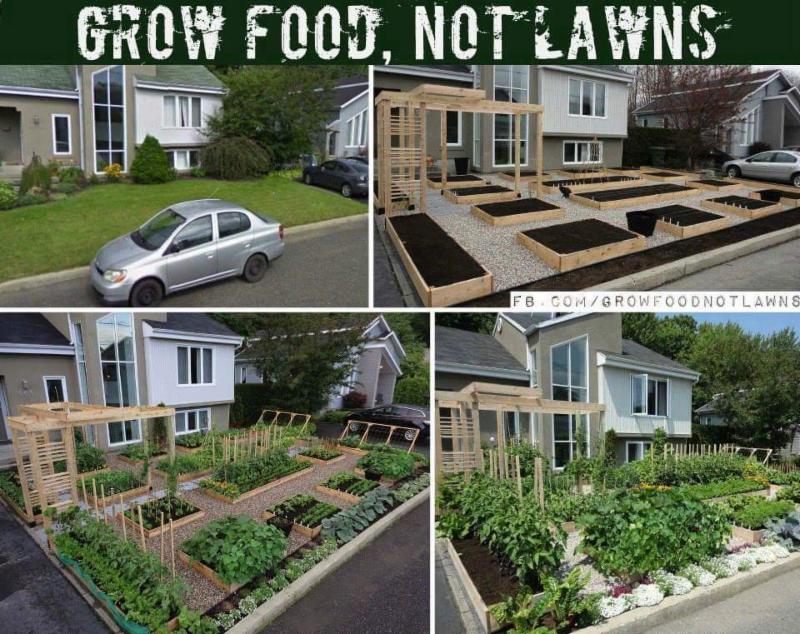 What was so unfortunate though, as I went around the country on tour, I can't tell you how many people I watched with these
manicured lawns, yet they could barely walk to the mailbox to get their mail, because they were so
sick and
unhealthy.
For the past 90 days, my network and I have provided
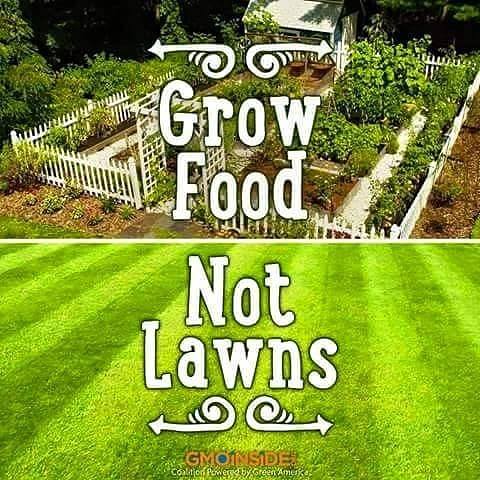 some great information for you, your family and your entire community, to be able to start growing your own foods, however, I still advise you to buy my book
 Information is not only power, but it's only power when you put it to use.
The first raised bed that I planted on June 14, 2017, will
continue to grow until the frost hits and now we have made more room in it for even more winter crops to plant.
The goal is to inspire others to get started with their gardening journey. My daughter is looking at starting your own gardening journey once she obtains more info from her region. She is already growing different plants and peppers in pots and containers on her back porch.
I am so proud of her -- "Go
TeamEssentialWomen.com
!!!
Even though this journey ends my
FIRST raised bed gardening project, I will still continue
writing articles and
selecting quality videos on how to grow foods for my blog at
"Cathy Harris Garden Club."
I will continue to keep everyone motivated through our food movement
I will inform you on the progress of future gardening projects and will seriously get started on my new book entitled "My First Gardening Journey: How I Built A Raised Bed Garden and Invited  Others Along for the Ride." Others Along for the Ride."
 P
eople need the book. They need the
encouragement
and
motivation
that it will bring, especially with the P
eople need the book. They need the
encouragement
and
motivation
that it will bring, especially with the
 campaign that I will launched around the release of the new book. campaign that I will launched around the release of the new book.
Our younger generation need to know that if a 60 year old senior, like myself, can write a book and launched a local, national and international gardening campaign and movement and inspire a whole nation of individuals, then they can also do the same!!!
Love you all...
Cathy Harris, Speaker, Author, Coach
Angels Press, CEO, President, Publisher
National Non-GMO Health Movement
P.O. Box 19282
Austin, TX 78760
(512) 909-7365
(Seminars, Workshops, Coaching)
(Webinars)
(Empowerment & Publishing Company)
(Advice Columnist)
Our Food Campaign
Mastermind Meetings
Mastermind, Think Tank, & Classroom Meeting
Sep. 19, 2017 - 60 minutes.
Mastermind, Think Tank, & Classroom Meeting
Aug. 15, 2017 - 90 minutes.
Mastermind, Think Tank, Classroom Meeting
July 18, 2017 - 60 minutes.
My Gardening Journey
Started June 14, 2017
40 Days
50 Days
60 Days
How To Grow Your Own Foods
10 Steps To Start Growing
Your Own Foods
How To Use Pots and Containers
To Grow Foods
How To Grow Foods From Seeds
Inside Your Home
What You Need To Know About
Roadside Vendors Today

Virtual Organic Garden Clubs Launches "The Beauty and Barber Shop" (or "Storefront") Initiative
Masterminds, Thinks Tanks and Classrooms are Held Monthly on
"How To Grow Your Own Foods"
|